Snake Characteristics
Snake Characteristics
Because all of Kentucky's venoumous snakes are members of the pit viper family, you can easily tell the difference between venomous and nonvenomous snakes. Note that these characteristics may not help differentiate between venomous and non-venomous snakes in other southeastern states.
Explanation of body shapes
Kentucky’s snake species exhibit wide variability in body shape. Some species are thick, stocky and heavy-bodied for their length; these snakes include our pit viper species, eastern hognose snakes, some of the watersnakes and others. Other species are usually slender for their length. Slender species include rough greensnakes, several of the woodland snakes (wormsnakes, ringneck snakes, red-bellied snakes), black racers and ribbonsnakes. While body shapes are often generalizable for a given species, occasionally snake species deviate from their typical shapes. For example, it is not uncommon to find slender or moderately-shaped northern watersnakes. It is best to use body shape in association with other characteristics to identify your snake.

Head Shape
Venomous snakes usually have a triangular (wide at the back and attached to a narrow neck) or 'spade-shaped' head. Be aware that many non-venomous snakes, such as watersnakes, flatten their heads when threatened and may be confused with venomous snakes.
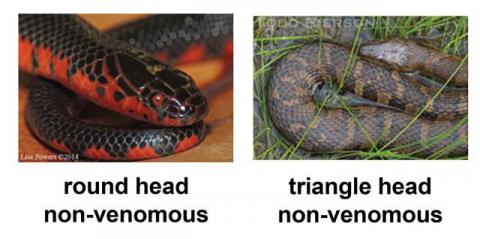
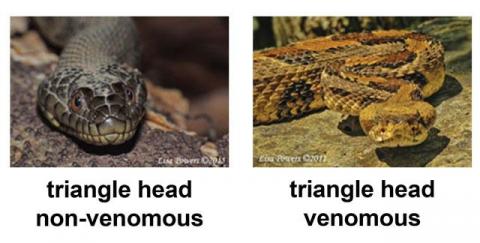
Pupil Shape
In Kentucky, the black part in the center of the eye (pupil) of harmless snakes is round. Venomous snakes have egg-shaped or cat-like (elliptical) pupils.

Pit
Venomous snakes in Kentucky have a very conspicuous sensory area or pit (hence the name 'pit viper') on each side of the head. The pit looks somewhat like a nostril and helps the snake locate warm-bodied prey. It is located about midway and slightly below the eye and nostril. Non-venomous snakes do not have pits.
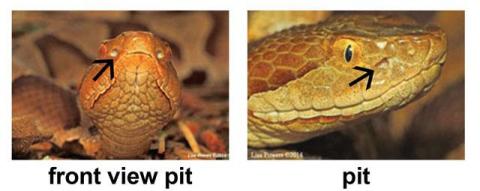
Scale Arrangement
The underside scales of a venomous snake's tail are a single row from the anal plate. However, the very tip of the tail may have two scale rows. Non-venomous snakes have two rows of scales from the anal plate to the end of the tail. This characteristic can also be observed on skins that have been shed.
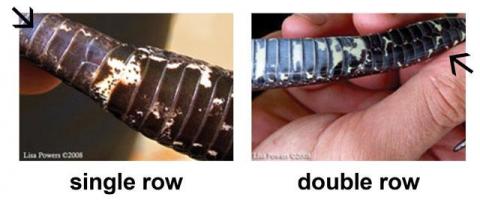
Tail
You can easily recognize young cottonmouths and copperheads by their bright yellow or greenish yellow tail. Of course, the rattlesnakes usually have rattles on their tail tips.
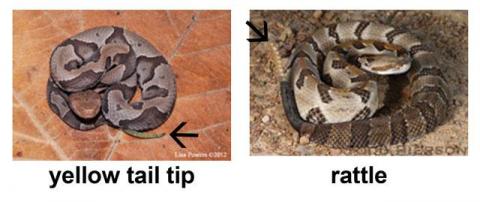
Distinctive Sound
Rattlesnakes will usually sound a warning rattle (a buzz or a dry, whirring sound) when approached. However, many non-venomous snakes (black racers, corn snakes, rat snakes, milk snakes, and pine snakes) and several venomous snakes (copperhead and cottonmouth) often vibrate their tails when threatened. The sound produced by this vibration often imitates a rattle or hissing sound when the snake is sitting in dry grass or leaves.
